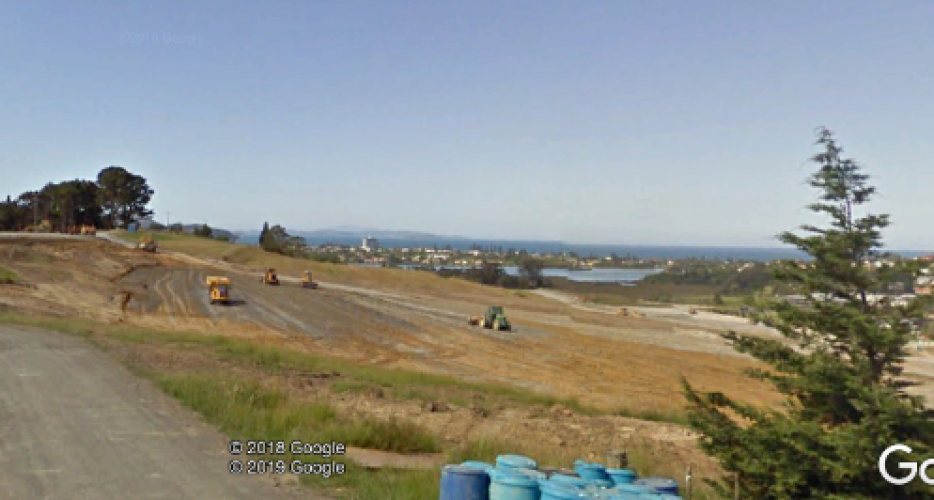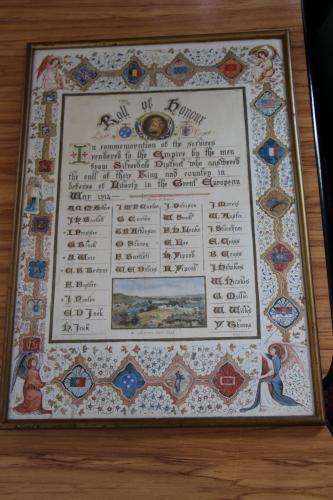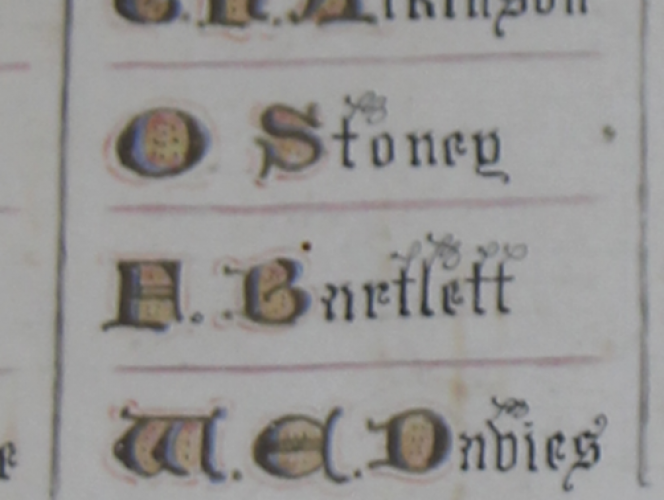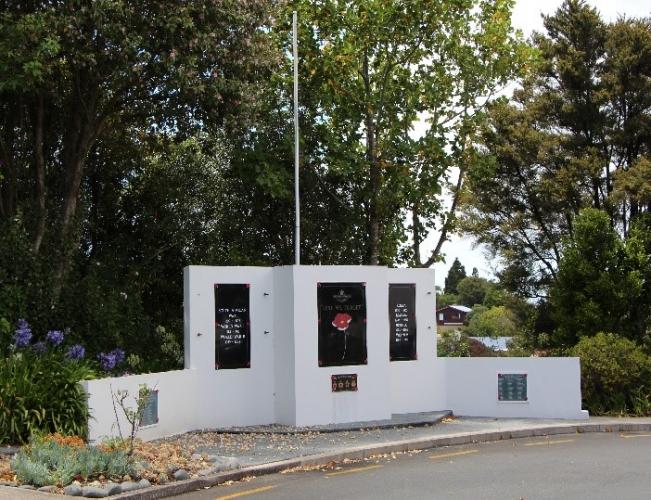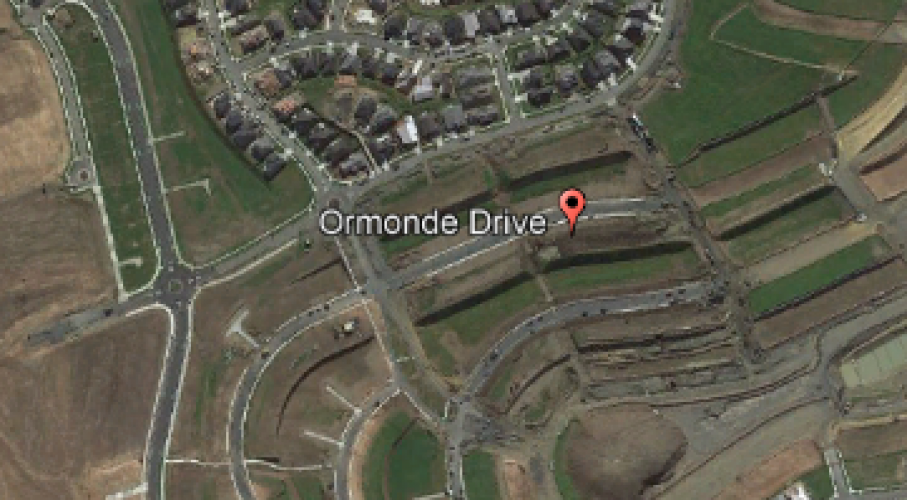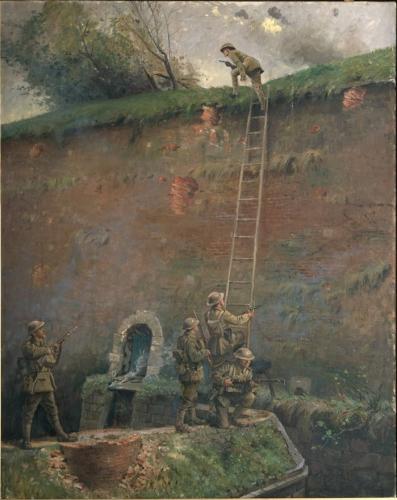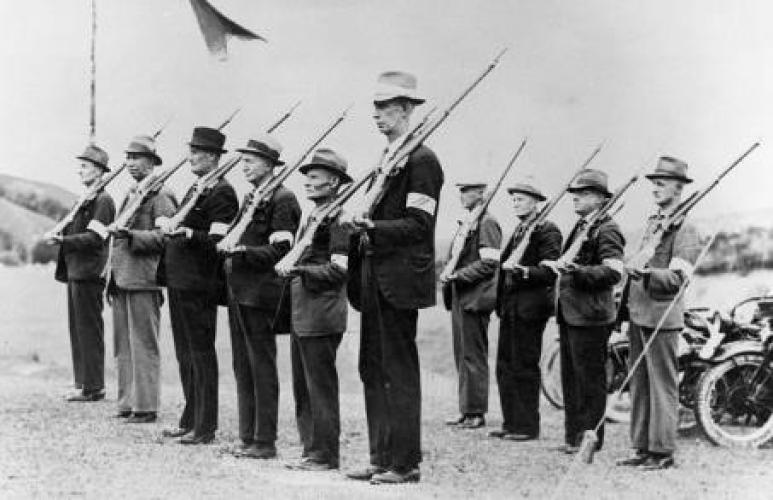176 Ormonde Drive Silverdale Auck, aerial view 2018
Reason for the name
This street was named in honour of Ormonde Henry Butler Stoney Regimental number 11130 who served on the Western Front in WW1 and in the Home Guard during WW2. The details surrounding the specific reason for naming this street have yet to be added to this story by the local Council.
Ormonde Stoney was born on 29th July 1895. When war broke out he was 19 years old. WWI Regimental number 11130, WWII Regimental number 527750
WW1 Ormonde served as a Rifleman, 3rd NZ Rifle Brigade, 2nd Battalion, WW2 Ormonde served as a WO2 (Quartermaster Sergeant) in the Home Guard.
Prior to 1916 Ormonde lived in Silverdale. His next of kin on embarkation was Walter Butler Stoney (father) of Silverdale and during WW2 it was Mrs C.M. Stoney (wife), of Main Road, Silverdale. Thus he was single during WW1 and married during WW2. Ormonde first enlisted on 12 January 1916 Aged 20. His occupation was a Farmer.
He embarked for WW1 on 01 May 1916 arriving 9 June 1916 in Suez, Egypt. He travelled on the Vessel Ulimaroa HMNZT 51 as a Rifleman 6th Reinforcements 1st Battalion, E Company New Zealand Rifle Brigade. On 13 May 1919 Ormonde was discharged from the Army as no longer physically fit on account of illness contracted on active service. At this time he was a member of the New Zealand Rifle Brigade, 2nd Battalion. Ormonde was awarded four medals: British War Medal (1914-1920), Victory Medal, War Medal 1939-1945 and the New Zealand War Service Medal.
In WW2 on 8 September 1942 He reenlisted aged 47 and married with 4 children. Ormonde joined the Northern Military District, Area 1, Helensville as a Warrant Officer Class 2 (Quartermaster Sergeant) in the Home Guard. He was eventually discharged on 9 October 1943.
Author: The Poppy Places Trust
Rifleman Ormonde Stoney was a member of the NZ Rifle Brigade (Earl of Liverpool's Own), affectionately known as The Dinks, it was formed on 1 May 1915 as the third brigade of the New Zealand Division, part of the New Zealand Expeditionary Force. During the First World War it fought in Egypt, against the Senussi, and then on the Western Front in France. It was disbanded on 4 February 1919.
Following the outbreak of the First World War, the New Zealand government authorised the formation of the New Zealand Expeditionary Force (NZEF), under the command of Major General Alexander Godley, for service abroad. By October 1914, there were sufficient volunteers to form two brigades, the New Zealand Infantry Brigade and the New Zealand Mounted Brigade. These two formations formed the main body of the NZEF and, together with the Australian 4th Infantry Brigade and the 1st Light Horse Brigade, were the basis of the New Zealand and Australian Division, which fought in the Gallipoli campaign against the Turks.
In the meantime, another regiment of infantry was being raised, with effect from 1 May 1915. This regiment, the precursor to the New Zealand Rifle Brigade (NZRB), was to consist of two infantry battalions and was originally known as the Trentham Regiment (The Earl of Liverpool's Own) The two battalions were placed under the command of Lieutenant Colonel Harry Fulton. Later, as the first two battalions finished its training in New Zealand, the government decided to increase the strength of the regiment by adding two further battalions, thus bringing the regiment up to the size of a brigade. By this time, the Trentham Regiment's designation had been abolished and it was now officially known as the New Zealand Rifle Brigade (Earl of Liverpool's Own).
After a period of training the brigade entered the line on 13 May east of Armentières. It participated in the vast majority of the battles of 1916, 1917 and 1918. Notable examples include:
• The brigade's first major offensive was during the Battle of the Somme when it attacked on 15 September as part of the Battle of Flers-Courcelette.
• The Battle of Messines, possibly the most complete Allied victory of the war until late 1918.
• Third Ypres, normally described these days as Passchendaele.
• It was thrown into a gap in the line caused by the German attack, called Operation Michael, on 26 April 1918.
• Finally it fully participated in the Hundred Days Offensive that ultimately culminated inside Germany
The NZRB, as part of the New Zealand Division, formed part of II Corps of the Second Army, assigned to the Army of Occupation on the Rhine. The NZRB made its way to Cologne, where it was to be stationed, on foot, beginning its march from France on 28 November 1918. It arrived at Cologne on 22 December 1918.
Its occupation duties were light, with morning parades and training sessions leaving time in the afternoon for sightseeing. An education programme was implemented although many men were more interested in returning to New Zealand. The NZEF had begun demobilising on 26 December 1918 and by the end of the following month, up to 1,000 personnel were leaving each week for England to catch ships destined for New Zealand. By mid-January 1919, the brigade's normal complement of four battalions had been reduced to two with the final units being disbanded on 4 February 1919.
The brigade was nicknamed The Dinks although its origin is unclear. It is generally understood to be a contraction of "Dinkum", meaning having excellence and quality. The nickname itself appears to date to the arrival of the 2nd Battalion (Frank’s unit) in Egypt. The newly arrived personnel sought to maintain high standards of presentation and drill which the Gallipoli veterans also in Egypt considered to be excessive. They referred to the battalion as "Square Dinkums" but with disrespect, and this was later applied to the brigade as a whole once it had been assembled. Another possibility for the nickname is that following the 1st Battalion's engagement of December 1915 at Mersa Matruh against the Senussi, Gallipoli veterans ironically referred to it as "a fair dinkum fight", comparing to the much more intensive action experienced on the Gallipoli peninsula. Over time, the nickname was shortened to "The Dinks", and the brigade's personnel took pride in it as the nickname began to be used in a more respectful context as it established its reputation on the Western Front.
The records show Rifleman Ormonde Stoney was admitted to No5 General hospital in Rouen with influenza on 18 July 1918, four days later he was transferred to England and on 7 September 1918 he was classified unfit for further service and embarked for NZ on 8th December 1918 on the SS Ruahine.
The ancient French city of Rouen on the Seine has played a significant role in the two World Wars. In the First World War the city was safely behind the lines and became a major logistics centre with numerous base hospitals. Commonwealth camps and hospitals were stationed on the southern outskirts of Rouen. A base supply depot and the 3rd Echelon of General Headquarters were also established in the city.
Almost all of the hospitals at Rouen remained there for the duration of the war.
On the champ de courses on the outskirts of Rouen, the British established
Nos.5, 6, 9, 10, and 12 General Hospitals
Nos.1, 3, 8, 11, and 12 Stationary Hospitals
No.8 General Hospital was to the south of the town, and was, for most of the war, the largest of the Rouen hospitals, but its isolated position away from all other units caused some unrest among the nursing staff, who often felt rather cut off. No.2 British Red Cross Hospital was more central to the town. Two other hospitals were operated within the racetrack. One was a British hospital for wounded PoWs and British prisoners who had self-inflicted wounds and the third was a British colonial hospital. No 1 Australian General Hospital was also at Rouen. In 1940 its capture gave the invading German forces a bridgehead across the Seine and consequently areas near the river were bombed and shelled. In the spring of 1944 Allied aircraft completed the destruction that eventually left 45% of the city in ruins
During World War 2 Ormonde Stoney was a Warrant Officer Class 2 and served in the Home Guard. Formed in 1940 along the lines of the British example, the Home Guard was at first voluntary with a lower age restriction of 15 and no upper age limit. From 1942 it became compulsory for those between the ages of 35 and 50. Initially the guard were not supplied with uniforms and had to make do with an armband. For a long time there was a shortage of weapons and they depended on rifles provided by civilians. However, by 1943 training and resources had improved so that almost 100,000 guardsmen had uniforms. The basic unit of the guard was the platoon. Platoons were intended primarily to provide defence of their own localities, although some also patrolled on deserted beaches. At their greatest strength they included 119,000 guardsmen – 7.5% of the population, more than double the proportion of the Home Guard in Great Britain.

